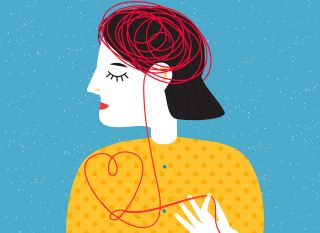Cross-Cultural Psychology
The Ultimate Guide: How Culture Rewires Nature and Nurture
Our personalities, values, and even stress responses are not just born or made — they are continuously sculpted where nature and nurture meet culture. Within the first years of life, cultural norms start tuning our brains, hormones, and habits, creating distinct ways of thinking, feeling, and relating. Understanding this "nature nurture: culture" interaction gives you a powerful roadmap to upgrade your mindset with evidence-based choices.
Culture is not a backdrop. It is an active force that trains your brain, shapes your body, and guides your story.
What Does It Really Mean That Culture Shapes Nature and Nurture?
In simple terms, culture is the shared system of meanings, norms, and practices that tells us what is "normal," "good," and "possible." It influences how we interpret success, show love, handle conflict, and process stress.
From a scientific view, the key idea is: repeated cultural experiences "get under the skin" and alter neural pathways, hormones, habits, and even gene expression over time. This is the heart of the modern nature nurture: culture model.
Featured Snippet (Definition)
Culture shapes us through repeated social and environmental experiences that tune our brains, emotions, and behaviors over time. It doesn’t erase biology; it directs it. Our genes provide possibilities, while culture filters which traits are practiced, rewarded, and strengthened across daily life.
How Does Culture Influence Personality and Behavior?
People often ask: "Is my personality mostly innate, or did culture make me this way?" Current research shows it is neither one nor the other.
Personality develops through a dynamic loop:
- Biological tendencies (e.g., sensitivity, sociability)
- Cultural expectations (e.g., "speak up" vs. "stay humble")
- Reinforcement patterns (what gets praised, ignored, or judged)
Over time, culture selectively amplifies some innate tendencies and quiets others, creating recognizable patterns across societies.
Research Hook: Why Culture Is the Missing Piece in the Nature vs. Nurture Debate
For years, debates focused on genes vs. environment. By 2025, the leading view is clear: you cannot explain human psychology without culture as the bridge between nature and nurture.
Recent cross-cultural neuroscience shows that:
- Repeated cultural practices literally change brain activation.
- Norms surrounding family, work, and emotion shift how we regulate stress.
- Historical, ecological, and religious forces leave long psychological footprints.
This is not abstract theory. It explains why a compliment can boost one person’s self-esteem but embarrass another, why some cultures celebrate boldness while others prize harmony.
The Science of Nature, Nurture, and Culture
1. Culture Engrained in the Brain
Research in cultural neuroscience finds that cultural norms shape neural responses involved in self-perception, reward, and social evaluation (Kitayama & Salvador, 2017). When people repeatedly act within their cultural scripts, their brains become more efficient at those ways of thinking.
- In more independent contexts, brain regions linked to personal agency and individual achievement show stronger responses to one’s own success.
- In more interdependent contexts, neural systems become more sensitive to social obligations, feedback, and collective outcomes.
2. Ecology and Everyday Life
Our environments quietly nudge our values and relationships. This is a core mechanism of the nature nurture: culture dynamic.
Key pathways:
- Agricultural history (e.g., rice vs. wheat) influenced whether cooperation or autonomy became culturally central (Talhelm, 2020).
- Levels of disease threat, conflict, or disaster shaped how "tight" (strict) or "loose" (permissive) social norms became.
- Urban density vs. rural spacing alters how comfortable people feel with strangers, crowds, and boundaries.
These forces interact with human biology — such as our social bonding systems — to lock in durable cultural patterns.

Latest Research: How Culture Physically and Psychologically Shapes Us
Here are key findings from recent work in cultural psychology and related fields:
Culture and the Brain
- Repeated cultural practices are linked to differences in self-related neural processing between Western and East Asian groups (Kitayama & Salvador, 2017; 2023).
- Some patterns reflect not fixed "types" of people, but learned mental habits that can change with context or migration.
Ecology and Values
- Around 20% of global variation in cultural norms can be statistically linked to ecological conditions, such as agriculture, climate, and pathogen prevalence (Wormley et al., 2023).
Kinship and Individualism
- Historical restrictions on close-kin marriage reshaped family structures and encouraged more independence, impartial norms, and trust in non-relatives in parts of Europe (Schulz et al., 2019; Harvard, 2024 summary).
Emotion and Ideal Affect
- People in different cultural contexts prefer distinct "flavors" of positive emotion. Some favor calm and balance; others prefer excitement and enthusiasm (Tsai, 2017).
Stress, Meaning, and Coping
- Cross-cultural work shows variation in whether people cope by changing situations (primary control) or adjusting themselves (secondary control), with many cultures flexibly blending both (Han et al., 2022; Ji et al., 2022).
Evidence-Based Mechanisms: How Culture Gets Under the Skin
Culture shapes us through multiple, overlapping mechanisms that work together over time.
Social Learning
- From childhood, we mirror what gains approval: tone of voice, emotional display, independence vs. deference.
- These patterns crystallize into automatic responses, like apologizing quickly or asserting needs without guilt.
Neural Plasticity
- Repeated cultural tasks (e.g., group decision-making vs. individual choice) train specific networks.
- Over time, the brain optimizes for what the culture practices most, strengthening some circuits while pruning others.
Self-Construal
- Independent models emphasize "I am unique, self-expressive." Interdependent models emphasize "I am connected, responsive." (Kitayama et al., 2009).
- Each model guides what feels responsible, respectful, or selfish.
Norms and Sanctions
- "Tight" cultures enforce rules strongly; "loose" cultures tolerate deviation.
- These systems change how safe it feels to experiment, dissent, or show vulnerability.
Meaning-Making
- Cultural narratives shape how we interpret stress, failure, and success — as shame, growth, fate, or opportunity.
When nature, nurture, and culture align, traits feel effortless. When they clash, we experience inner tension — and also the greatest potential for growth.
People Also Ask: How Does Culture Influence Emotions and Happiness?
How does culture shape the emotions we feel most often?
Cultures differ in which emotions they consider appropriate, useful, or admirable. Over time, people learn to amplify some emotions and mute others.
- Interdependent cultures often encourage socially engaging emotions (e.g., friendliness, gratitude, shame) that support connection.
- More individualistic cultures more often reward socially disengaging emotions (e.g., pride, anger, frustration linked to personal rights).
- These emotional habits are learned, not hardwired, and can be expanded with awareness.
How does culture shape our definition of happiness?
In some cultures, happiness means feeling calm, safe, and in harmony with others; in others, it means energy, achievement, and visible joy.
Featured snippet (40–50 words):
Different cultures teach different "ideal" forms of happiness. Some value low-arousal states like calm and contentment; others favor high-arousal excitement and enthusiasm. These ideals influence how people rate their lives, make decisions, and judge what "good" days should feel like.
People Also Ask: How Does Culture Influence How We Judge Others?
Why do some people blame individuals while others blame situations?
Analytic thinking (more common in Western contexts) favors dispositional attributions — "they’re careless." Holistic thinking (more common across many Asian and other interdependent cultures) gives more weight to context — traffic, pressure, emergencies.
These habits are strongly influenced by:
- Educational styles
- Legal systems
- Cultural narratives about responsibility and fate
By 2025, cross-cultural work with diverse samples shows both styles exist everywhere; what differs is which one is default.
People Also Ask: How Do Independence and Interdependence Affect Self-Esteem?
Why do success and failure feel different across cultures?
In more independent systems, self-worth leans on self-enhancement: highlighting strengths, celebrating wins. In more interdependent systems, self-worth leans on self-improvement: noticing gaps, correcting mistakes.
Recent research using neural measures finds:
- U.S. participants show stronger brain responses to success feedback.
- East Asian participants show stronger responses to failure or needed improvement (Salvador et al., 2022).
Neither style is "wrong." Each is adaptive to its cultural ecosystem.
Research-Backed Strategies: Using Cultural Science for Personal Growth
You can use insights from the nature nurture: culture interaction to design a better daily life, without rejecting your roots.
1. Map Your Cultural Conditioning
Ask yourself:
- What did my family or community quietly reward — boldness or modesty, persistence or harmony?
- How did people express anger, affection, or disappointment?
- Which emotions felt "allowed"?
Write 3–5 patterns you still carry. Recognizing them turns autopilot into choice.
2. Expand Your Emotional Repertoire
- If you come from an excitement-driven culture, practice savoring calm, rest, and subtle joy.
- If you come from a harmony-focused culture, practice voicing needs without labeling it as selfish.
- Use a 60-second daily check-in: "What am I feeling, and who taught me to feel it this way?"
3. Choose Coping Strategies That Fit You (Not Just Your Culture)
Research shows cultures differ in preferred coping, but flexible use works best.
Try a two-step approach:
- Primary control: Change what you can (adjust workload, ask for help, clarify boundaries).
- Secondary control: Reframe what you can’t change (acceptance, meaning-making, spiritual practices).
Blend both, regardless of where you’re from.
4. Practice Self-Compassion Without Cultural Guilt
Decades of research (Neff, 2023) show self-compassion reliably supports mental health across cultures.
A simple, culturally sensitive practice:
- Notice: "This is a moment of suffering, not a personal defect."
- Normalize: "Struggle is part of being human (and part of my community’s story)."
- Nurture: Speak to yourself as you would to a loved one from your own culture.
Even where modesty is valued, self-compassion can be framed as maintaining strength for others.
Meta-Analysis Insights: What Large-Scale Evidence Shows
Across large datasets, a few robust patterns stand out:
- There is meaningful cultural variation, but also deep common ground: people everywhere seek belonging, dignity, and some sense of control.
- Ecology, history, and institutions (e.g., kinship rules, religious norms) systematically contribute to psychological differences (Wormley et al., 2023; Schulz et al., 2019).
- Self-compassion, secure relationships, and flexible coping predict better well-being across many societies (Arimitsu, 2023; Neff, 2023).
- "WEIRD" samples (Western, Educated, Industrialized, Rich, Democratic) are no longer treated as the default in leading 2023–2025 work; broader datasets from Latin America, Africa, South Asia, and the Middle East are reshaping theories (Stanford researchers).
Big-picture takeaway: Culture powerfully shapes expression, but core psychological needs are widely shared. Strategies that honor both universals and cultural specifics work best.
Practical Implementation: How to Apply This in Your Daily Routine
Use these steps to align your habits with the science of culture, nature, and nurture.
Morning: Set a Cultural Intention
- One sentence: "Today I will question one script I inherited and choose my own response."
During Conflict
- Pause and ask: "Am I judging this through my cultural lens only? What alternative explanation fits their background?"
In Achievement
- If you were raised on self-criticism, add one concrete acknowledgment of what you did well.
- If you were raised on self-praise, include one question: "What can I improve without attacking myself?"
In Relationships
- Learn one norm from another culture (e.g., differing views of punctuality, directness, emotional display) and practice curiosity instead of quick judgment.
With Stress and Burnout
-
Combine strategies:
- Adjust your workload or boundaries where possible.
- Use acceptance, spiritual meaning, or community support where change is limited.
-
Combine strategies:
Expert Recommendations for a Culturally Intelligent Life
Based on current evidence:
- Cultivate cultural humility: Assume your way is one of many, not the default.
- Train attributional flexibility: When annoyed, generate at least one situational explanation before judging character.
- Practice emotional bilingualism: Learn both high-energy joy and quiet contentment, assertion and attunement.
- Build support that fits your context: Whether it is close family networks or broad diverse circles, prioritize relationships that respect who you are becoming.
- Use self-compassion as a universal tool: It consistently supports resilience across cultures and identities.
When you understand how nature, nurture, and culture interact, you stop seeing your reactions as random flaws — and start seeing them as patterns you can understand, respect, and consciously reshape.





